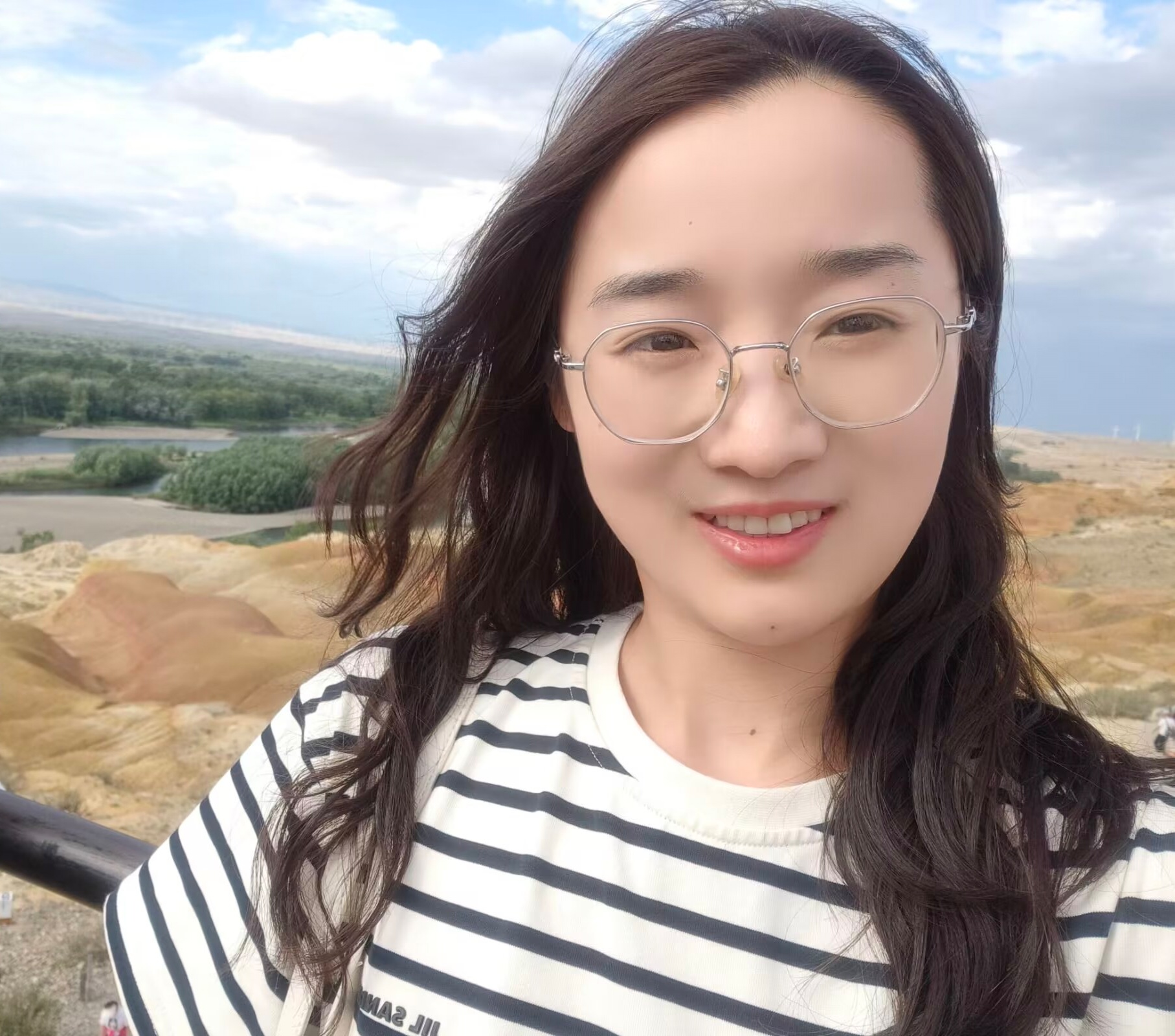

中国科学院院士 国家“杰出青年基金”获得者 中国科学院生物物理研究所,生物大分子重点实验室,研究组长
1987 - 1991 安徽大学,本科
1991 - 1994 北京大学医学部,硕士
1994 - 2001 美国爱因斯坦医学院,博士
2001 - 2004 马萨诸塞总医院癌症中心,博士后
2004 - 2009 北京生命科学研究所,研究员
2009 - 2012 北京生命科学研究所,高级研究员
2012 - 至今 中国科学院生物物理研究所,研究员
2023年 新基石研究员
2022年 中国生命科学十大进展
2022年 中源协和生命医学成就奖
2020年 第二届全国创新争先奖
2019年 国家自然科学奖二等奖
2019年 中国细胞生物学学会"杰出成就"奖
2018年 臻溪生命学者奖
2013年 谈家桢生命科学创新奖
2012年 国家杰出青年科学基金
2012年 霍华德·休斯医学研究所国际青年科学家奖
2006年 Lilly亚洲杰出科研成就奖
曾获国家高层次人才特殊支持计划科技创新领军人才
2012 - 《Autophagy》副主编
2023 - 《Journal of Cell Biology》资深学术编辑
2023 - 《Cell Chemical Biology》编委会成员
2022 - 《SCIENCECHINA Life Sciences》编委会成员
2020 - 《Trends in Biochemical Sciences》编委会成员
2016 - 《Cell Death and Differentiation》编委会成员
2016 - 《eLife》编委会成员
2015 - 《Journal of Cell Science》编委会成员
2013 - 《EMBO Reports》编委会成员
2010 - 《Protein & Cell》编委会成员
2021 - 中国生物物理学会 副理事长兼秘书长
自噬是由自噬体包裹胞质组分并运送到溶酶体降解的过程,对维持细胞正常功能至关重要。自噬异常与多种人类疾病密切相关,如神经退行性疾病等。以往人们对自噬分子机制的理解主要源于对酵母中鉴定的自噬基因的研究。多细胞生物自噬远比酵母自噬复杂,包含多个特有的自噬步骤。我课题组创立了线虫为研究多细胞生物自噬的遗传模型;鉴定了一系列多细胞生物特有的新自噬基因,并揭示了它们在多细胞生物自噬体形成和成熟过程的特有步骤中的作用机制。我课题组最新的研究发现内质网表面钙瞬变是决定自噬起始的关键信号,该发现解决了自噬领域一个长期悬而未决的难题。我们还揭示了液-液相分离在选择性自噬清除蛋白质聚集体中的作用。另外我课题组建立了研究多细胞生物自噬体成熟过程的遗传模型,并阐明了多个调控自噬活性的机理。这些研究极大地丰富了人们对多细胞自噬分子机制和调控机理的认识,并对阐明自噬异常与相关疾病的发病机理及开发新的治疗策略有重要意义。今后实验室将探究自噬起始的调控机制,重点关注内质网表面钙瞬变如何调控自噬体起始位点的组装,并将探讨神经退行性疾病相关基因突变引起的钙动力学异常导致自噬缺陷的机制。
代表性研究论文
1. Zheng, H., Peng, K.F., Gou, X.M., Ju, C., and Zhang, H. (2023). RNA recruitment switches the fate of protein condensates from autophagic degradation to accumulation. Journal of Cell Biology 222, e202210104.
2. Zheng, Q.X., Chen, Y., Chen, D., Zhao, H.Y., Feng, Y., Meng, Q., Zhao, Y., and Zhang, H. (2022). Calcium transients on the ER surface trigger liquid-liquid phase separation of FIP200 to specify autophagosome initiation sites. Cell 185, 4082-4098.
3. Wang, Z., Chen, D., Guan, D.S., Liang, X.B., Xue, J.F., Zhao, H.Y., Song, G.T., Lou, J.Z., He, Y. and Zhang, H. (2022). Material properties of phase-separated TFEB condensates regulate the autophagy-lysosome pathway. Journal of Cell Biology 221, e202112024.
4. Chen, D., Zheng, Q. X., Sun, L., Ji, M. M., Li, Y., Deng, H. Y., and Zhang, H. (2021). ORF3a of SARS-CoV-2 promotes lysosomal exocytosis-mediated viral egress. Developmental Cell 56, 3250-3263.
5. Liu, N., Zhao, H.Y., Zhao, Y.G., Hu, J.J. and Zhang, H., (2021). The ER membrane proteins Atlastin 2/3 regulate ER targeting of the ULK1 complex and formation of the ER-isolation membrane contact. Journal of Cell Biology 220, e202012091.
6. Miao, G., Zhao, H., Li, Y., Ji, M., Chen, Y., Shi, Y., Bi, Y., Wang, P., Zhang, H. (2021). ORF3a of the COVID-19 virus SARS-CoV-2 blocks HOPS complex-mediated assembly of the SNARE complex required for autolysosome formation, Developmental Cell 56, 427-442.
7. Chen, D., Wang, Z., Zhao, Y.G., Zheng, H., Zhao, H.Y., Liu, N., and Zhang, H. (2020). Inositol polyphosphate multikinase inhibits liquid-liquid phase separation of TFEB to negatively regulate autophagy activity. Developmental Cell 55, 588-602.
8. Miao, G.Y., Zhang, Y.J., Chen, D., and Zhang, H. (2020). The ER-localized transmembrane proteinTMEM39A/SUSR2 regulates autophagy by controlling the trafficking of the PtdIns(4)P phosphatase SAC1. Molecular Cell 77, 618-632.
9. Zhang, Y.J., Qi, L.X., and Zhang, H. (2019). TGFβ-like DAF-7 acts as a systemic signal for autophagy regulation in C. elegans. Journal of Cell Biology 218, 3998-4006.
10. Li, D.F., Zhao, G.Y., Li, D., Zhao, H.Y., Huang, J., Miao, G.Y., Feng, D., Liu, P.S., Li, D., and Zhang, H. (2019). The ER-localized protein DFCP1 modulates ER-LD contact formation. Cell Reports 27, 343-358.
11. Zhang, G.M., Wang, Z., Du, Z., and Zhang, H. (2018). mTOR regulates phase separation of PGL granules to modulate their autophagic degradation. Cell 174, 1492-1506.
12. Zhao, Y.G., Liu, N., Miao, G.Y., Chen, Y., Zhao, H.Y, and Zhang, H. (2018). The ER contact proteins VAPA/B interact with multiple autophagy proteins to modulate autophagosome biogenesis. Current Biology 28, 1234-1245.
13. Zhao, G.Y., Chen, Y., Miao, G.Y., Zhao, H.Y., Qu, W.Y., Li, D.F., Wang, Z., Liu, N., Li, L., Chen, S., Liu, P.S., Feng, D., and Zhang, H. (2017). The ER-localized transmembrane protein VMP1 regulates SERCA activity to control ER-isolation membrane contacts for autophagosome formation. Molecular Cell 67, 974-989.
14. Wang, Z., Miao, G.Y., Xue, X., Guo, X.Y., Yuan, C.Z., Wang, Z.Y., Zhang, G.M., Feng, D., Hu, J.J., and Zhang, H. (2016). The Vici syndrome protein EPG5 is a Rab7 effector that determines the fusion specificity of autophagosomes with late endosomes/lysosomes. Molecular Cell 63, 781-795.
15. Wu, F., Watanabe, Y., Guo, X.Y., Qi, X., Wang, P., Zhao, H.Y., Wang, Z., Fujioka, Y., Zhang, H., Ren, J.Q., Fang, T.C., Shen, Y.X., Feng, W., Hu, J.J., Noda, N.N. and Zhang, H. (2015). Structural basis of the differential function of the two C. elegans Atg8 homologs, LGG-1 and LGG-2, in autophagy. Molecular Cell 60, 914-929.
16. Zhao, G.Y., Sun, L., Mia, G.Y., Ji, C.C., Zhao, H.Y., Sun, H.Y., Miao, L., Yoshii, S.R., Mizushima, N., Wang X.Q., and Zhang, H. (2015). The autophagy gene Wdr45/Wipi4 regulates learning and memory function and axonal homeostasis. Autophagy 11, 881-890.
17. Guo, B., Liang, Q.Q., Li, L., Hu, Z., Wu, F., Zhang, P.P., Ma, Y.F., Zhao, B., Kovács, A.L., Zhang, Z.Y., Feng, D., Chen, S., and Zhang, H. (2014). O-GlcNAc-modification of SNAP-29 regulates autophagosome maturation. Nature Cell Biology 16, 1215-1226.
18. Guo, B., Huang, X.X., Zhang, P.P., Qi, L.X., Liang, Q.Q., Zhang, X.B., Huang, J., Fang, B., Hou, W.R., Han, J.H., and Zhang, H. (2014). Genome-wide screen identifies signaling pathways that regulate autophagy during Caenorhabditis elegans development. EMBO reports 15, 705-713.
19. Li, S.H., Yang, P.G., Tian, E, and Zhang, H. (2013). Arginine methylation modulates autophagic degradation of PGL granules in C. elegans. Molecular Cell 52, 421-433.
20. Zhang, P.P., and Zhang, H. (2013). Autophagy modulates miRNA-mediated gene silencing and selectively degrades AIN-1/GW182 in C. elegans. EMBO reports 14, 568-576.
21. Lin, L., Yang, P.G., Huang, X.X., Zhang, H., Lu, Q., and Zhang, H. (2013). The scaffold protein EPG-7 links cargo/receptor complexes with the autophagic assembly machinery. Journal of Cell Biology 201, 113-129.
22. Zhao, H.Y., Zhao, G.Y., Wang, X.W., Xu, L.J., Miao, L., Feng, D., Chen, Q., Kovács, A.L. Fan, D.S., and Zhang, H. (2013). Mice deficient in Epg5 exhibit selective neuronal vulnerability to degeneration. Journal of Cell Biology 200, 731-741.
23. Huang, J., Wang, H.B., Chen, Y.Y. Wang, X.X., and Zhang, H. (2012). Residual body removal during spermatogenesis in C. elegans requires genes that mediate cell corpse clearance. Development 139, 4613-4622.
24. Lu, Q., Yang, P.G., Huang, X.X., Hu, W.Q., Guo, B., Wu, F., Lin, L., Kovács, A.L., Yu, L. and Zhang, H. (2011). The WD40 repeat PtdIns(3)P-binding protein EPG-6 regulates progression of omegasomes to autophagosomes. Developmental Cell 21, 343-357.
25. Huang, X.X., Zhang, H. and Zhang, H. (2011). The zinc-finger protein SEA-2 regulates larval developmental timing and adult life span in C. elegans. Development 138, 2059-2068.
26. Tian, Y., Li, Z.P., Hu, W.Q., Ren, H.Y., Tian, E, Zhao, Y., Lu, Q., Huang, X.X., Yang, P.G., Li, X., Wang, X.C., Kovács, A.L., Yu, L. and Zhang, H. (2010). C. elegans screen identifies autophagy genes specific to multicellular organisms. Cell 141, 1042-1055.
27. Zhang, Y.X., Yan, L.B., Zhou, Z., Yang, P.G., Tian E, Zhang, K., Zhao, Y., Li, Z.P., Song, B., Han, J.H., Miao, L., and Zhang, H. (2009). SEPA-1 mediates the specific recognition and degradation of P granule components by autophagy in C. elegans. Cell 136, 308-321.
28. Yang, Y., Sun, Y.Y., Luo, X., Zhang, Y.X., Chen, Y.Y., Tian, E, Lints, R., and Zhang, H. (2007). Polycomb-like genes are necessary for specification of dopaminergic and serotonergic neurons in Caenorhabditis elegans. PNAS 104, 852-857.
29. Zhang, T.T., Sun Y.Y., Tian, E, Deng, H.S., Zhang, Y.X., Luo, X., Cai, Q.Q., Wang, H., Chai, J.J., and Zhang, H. (2006). RNA-binding proteins SOP-2 and SOR-1 form a novel PcG-like complex in C. elegans. Development 133, 1023-1033.
代表性综述文章
1. Mayr, C., Mittag,T., Tang, D., Wen, W.Y., Zhang, H., (co-corresponding) and Zhang, H.Y. (2023). Frontiers in biomolecular condensate research. Nature Cell Biology 25, 512-514.
2. Zhang, H. (2022). The genetics of autophagy in multicellular organisms. Annual Review of Genetics. 56, 17-39.
3. Wang, Z., Lou, J.Z., and Zhang, H. (2022). Essence determines phenomenon: Assaying the material properties of biological condensates. Journal of Biological Chemistry 298, 101782.
4. Zhao, Y.G., Codogno, P., and Zhang, H. (2021). Machinery, regulation and pathophysiological implications of autophagosome maturation. Nature Reviews Molecular Cell Biology 22, 733-750.
5. Zhao, Y.G., and Zhang, H. (2020). Phase separation in membrane biology: the interplay between membrane-bound organelles and membraneless condensates. Developmental Cell 55, 30-44.
6. Noda, N.N., Wang, Z., and Zhang, H. (2020). Liquid-liquid phase separation in autophagy. Journal of Cell Biology 219, e202004062.
7. Zhang, H., Ji, X., Li, P.L., Liu, C., Lou, J.Z., Wang, Z., Wen, W.Y., Xiao, Y., Zhang, M.J. and Zhu, X.L. (2020). Liquid-liquid phase separation in biology: mechanisms, physiological functions and human diseases. SCIENCECHINA Life Sciences 63, 953-985.
8. Zhao, Y.G., and Zhang, H. (2019). Core autophagy genes and human diseases. Current Opinion in Cell Biology 61, 117-125.
9. Wang, Z., and Zhang, H. (2019). Phase separation, transition and autophagic degradation of proteins in development and pathogenesis. Trends in Cell Biology 29, 417-427.
10. Zhao, Y.G., and Zhang, H. (2019). Autophagosome maturation: an epic journey from the ER to lysosomes. Journal of Cell Biology 218, 757-770.
11. Zhao, Y.G., and Zhang, H. (2018). Formation and maturation of autophagosomes in higher eukaryotes: a social network. Current Opinion in Cell Biology 53, 29-36.
12. Joshi, A.S., Zhang, H., and Prinz, W.A. (2017). Organelle biogenesis in the endoplasmic reticulum. Nature Cell Biology 9, 876-882.
13. Zhang, H., and Baehrecke, E.H. (2015). Eaten alive: novel insights into autophagy from multicellular model systems. Trends in Cell Biology 25, 376-387.
14. Yang, P.G., and Zhang, H. (2014). You are what you eat: multifaceted functions of autophagy during C. elegans development. Cell Research 24, 80-91.
(资料来源:张宏研究员,2024-09-24)
-
 赵红玉,博士赵红玉于2013年获中国农业大学博士学位,随后在张宏课题组从事博士后研究,现任副研究员,负责实验室的电镜样品制样和分析。
赵红玉,博士赵红玉于2013年获中国农业大学博士学位,随后在张宏课题组从事博士后研究,现任副研究员,负责实验室的电镜样品制样和分析。 -
 郑辉,博士郑辉本科毕业于西北大学,博士毕业于北京大学医学部。现在是张宏实验室助理研究员,致力于多细胞生物细胞自噬的分子机制和调控机理研究。
郑辉,博士郑辉本科毕业于西北大学,博士毕业于北京大学医学部。现在是张宏实验室助理研究员,致力于多细胞生物细胞自噬的分子机制和调控机理研究。 -
 马晓丽,博士马晓丽在山西师范大学获学士学位,山西大学获得博士学位。于2020年加入张宏实验室,现为助理研究员,研究选择性自噬起始的分子机制。
马晓丽,博士马晓丽在山西师范大学获学士学位,山西大学获得博士学位。于2020年加入张宏实验室,现为助理研究员,研究选择性自噬起始的分子机制。 -
 程霄翔,博士程霄翔在澳门大学获得博士学位,并于2022年加入张宏实验室开始博士后研究,主要关注细胞自噬与神经退行性疾病关系的研究。
程霄翔,博士程霄翔在澳门大学获得博士学位,并于2022年加入张宏实验室开始博士后研究,主要关注细胞自噬与神经退行性疾病关系的研究。 -
 冯玉洁,博士冯玉洁2023年获得山东大学医学博士学位,同年加入实验室开始博士后研究,专注于自噬机制的研究。
冯玉洁,博士冯玉洁2023年获得山东大学医学博士学位,同年加入实验室开始博士后研究,专注于自噬机制的研究。 -
 赖云菲,博士赖云菲2023年获得军事科学院军事医学研究院医学博士学位。同年加入张宏实验室开始博士后研究,专注于细胞自噬分子机制研究。
赖云菲,博士赖云菲2023年获得军事科学院军事医学研究院医学博士学位。同年加入张宏实验室开始博士后研究,专注于细胞自噬分子机制研究。
-
 钟华健钟华健本科毕业于山东大学。他于2018年加入实验室,研究方向是相关蛋白聚集体自噬降解的分子机制。
钟华健钟华健本科毕业于山东大学。他于2018年加入实验室,研究方向是相关蛋白聚集体自噬降解的分子机制。 -
 居辰居辰在吉林大学取得学士学位。她于2019年加入实验室,主要工作是研究新冠病毒非结构蛋白对细胞内膜系统的影响。
居辰居辰在吉林大学取得学士学位。她于2019年加入实验室,主要工作是研究新冠病毒非结构蛋白对细胞内膜系统的影响。 -
 缑晓萌缑晓萌在北京工业大学获得学士学位。她于2019年加入实验室,目前在研究线虫中核转运蛋白调控自噬的分子机制。
缑晓萌缑晓萌在北京工业大学获得学士学位。她于2019年加入实验室,目前在研究线虫中核转运蛋白调控自噬的分子机制。 -
 杨春杨春本科毕业于北京科技大学。她于2020年加入实验室,工作是研究蛋白聚集体的自噬降解机制。
杨春杨春本科毕业于北京科技大学。她于2020年加入实验室,工作是研究蛋白聚集体的自噬降解机制。 -
 许文艳许文艳在复旦大学获得学士学位。她于2021年加入实验室,目前研究方向为钙离子信号在调控自噬降解中的作用。
许文艳许文艳在复旦大学获得学士学位。她于2021年加入实验室,目前研究方向为钙离子信号在调控自噬降解中的作用。 -
 梁家勉梁家勉在中国科学院大学获得学士学位。他于2022年加入实验室,目前在探索细胞周期中自噬发挥的作用。
梁家勉梁家勉在中国科学院大学获得学士学位。他于2022年加入实验室,目前在探索细胞周期中自噬发挥的作用。 -
 张焕张焕在北京大学医学部获得硕士学位。她于2022年加入实验室,目前在研究翻译后修饰对自噬的调控。
张焕张焕在北京大学医学部获得硕士学位。她于2022年加入实验室,目前在研究翻译后修饰对自噬的调控。 -
 程之扬程之扬在上海海洋大学获得学士学位。他于2023年加入实验室,目前在研究高尔基膜蛋白调控自噬的分子机制。
程之扬程之扬在上海海洋大学获得学士学位。他于2023年加入实验室,目前在研究高尔基膜蛋白调控自噬的分子机制。 -
 张杨景晖张杨景晖在东北林业大学获得学士学位。于2023年加入实验室,他的兴趣在探究线虫中钙离子信号相关的细胞生物学机制。
张杨景晖张杨景晖在东北林业大学获得学士学位。于2023年加入实验室,他的兴趣在探究线虫中钙离子信号相关的细胞生物学机制。 -
 柯佳依柯佳依本科毕业于北京化工大学。她于2023年加入实验室。
柯佳依柯佳依本科毕业于北京化工大学。她于2023年加入实验室。
-
 郑巧霞,博士郑巧霞于2018年毕业于北京大学,并获得博士学位。随后加入张宏实验室,历任助理研究员和副研究员。2024年,她在北京大学医学部组建独立课题组,继续从事钙信号与自噬的研究。
郑巧霞,博士郑巧霞于2018年毕业于北京大学,并获得博士学位。随后加入张宏实验室,历任助理研究员和副研究员。2024年,她在北京大学医学部组建独立课题组,继续从事钙信号与自噬的研究。 -
 王峥,博士王峥分别在天津大学和南开大学获得学士和博士学位,并于2014年加入张宏实验室,历任博士后和副研究。2024年,他前往南昌大学组建独立课题组,继续从事自噬和生物大分子相变的研究。
王峥,博士王峥分别在天津大学和南开大学获得学士和博士学位,并于2014年加入张宏实验室,历任博士后和副研究。2024年,他前往南昌大学组建独立课题组,继续从事自噬和生物大分子相变的研究。
